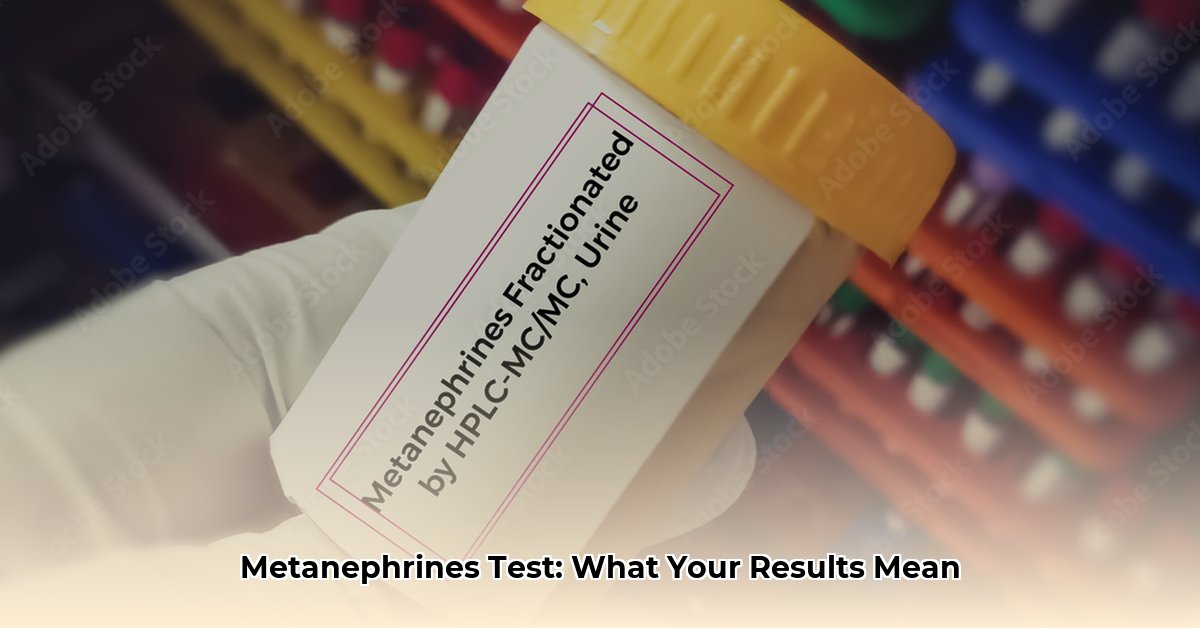Understanding the Metanephrines Blood Test
Do you experience bouts of rapid heartbeat, unexplained sweating, or persistent headaches? These could be symptoms of various conditions, including an overactive adrenal gland. A metanephrines blood test helps evaluate adrenal gland function. This guide provides a clear, step-by-step explanation of the test, its purpose, preparation, and result interpretation.
What are Metanephrines?
Your adrenal glands, located atop your kidneys, produce adrenaline (epinephrine) and noradrenaline (norepinephrine), the “fight-or-flight” hormones. Metanephrines and normetanephrines are byproducts (metabolites) of these hormones. This blood test measures their levels in your bloodstream.
Why is This Test Performed?
The metanephrines blood test helps diagnose rare tumors called pheochromocytomas and paragangliomas. Pheochromocytomas typically form in the adrenal glands and are usually benign (non-cancerous). Paragangliomas arise outside the adrenal glands. These tumors can overproduce adrenaline and noradrenaline, leading to persistent high blood pressure, severe headaches, and excessive sweating. The test is also used to monitor treatment effectiveness in patients already diagnosed with these tumors.
Preparing for Your Metanephrines Blood Test: A Step-by-Step Guide
Accurate test results depend on proper preparation. Follow these steps to ensure reliable outcomes:
1. Consult Your Doctor
Discuss all medications, including over-the-counter drugs, supplements, and herbal remedies, with your doctor. Some medications can interfere with test results. Your doctor might advise temporarily stopping certain medications. Never discontinue prescribed medications without consulting your doctor.
2. Dietary Adjustments
- Caffeine: Avoid caffeine for at least 12 hours before the test, as it can mimic the hormones being measured. This includes coffee, tea, chocolate, and some energy drinks.
- Alcohol: Avoid alcohol for 24 hours before the test, as it can influence hormone levels.
- Fasting: Some labs require fasting (no food or drink other than water) for a specific period. Check with your doctor or the lab for specific instructions.
3. Medication Management
Inform your doctor about all medications you take, as some (e.g., decongestants, antidepressants) may influence the test results.
4. Lifestyle Adjustments
- Exercise: Avoid strenuous exercise for 12 hours before the test, as intense activity increases hormone levels.
- Smoking: Refrain from smoking before the test, as it can affect hormone levels.
- Stress: Minimize stress before the test. Relaxation techniques like deep breathing or meditation can help.
5. Just Before the Test
Rest lying down (supine position) for 20-30 minutes before the blood draw to stabilize hormone levels.
Understanding Your Test Results
What Do the Numbers Mean?
Results are usually reported in nanomoles per liter (nmol/L) or picograms per milliliter (pg/mL). Pay close attention to the units used, as they are not interchangeable. “Normal” plasma metanephrine levels are generally below 0.50 nmol/L, with optimal levels potentially even lower (0 to 0.29 nmol/L).
Interpreting the Results
- High Metanephrines: Elevated levels may suggest a pheochromocytoma or paraganglioma. However, other factors, such as medications, certain foods, or sleep apnea, can also contribute to high levels.
- Low Metanephrines: While less common, low levels can result from medications used to treat pheochromocytomas, such as Metyrosine.
Next Steps
If your results show elevated metanephrines, your doctor may recommend a 24-hour urine metanephrines test for a more comprehensive assessment. Further testing, such as imaging scans (CT or MRI), might also be necessary.
Frequently Asked Questions (FAQs)
-
Q: Is the metanephrines blood test painful?
- A: The test involves a standard blood draw. You may feel a slight pinch when the needle is inserted, but it’s generally not painful.
-
Q: How long does it take to receive the results?
- A: Results are typically available within a few days to a week, depending on the lab.
-
Q: What if my results are high?
- A: Elevated results don’t necessarily indicate a tumor. Your doctor will consider your overall health, symptoms, and other test results before making a diagnosis. Further investigation may be required.
Important Considerations
- Ongoing Research: Research on metanephrines and related conditions is ongoing, so diagnostic and treatment approaches may evolve.
- Individualized Interpretation: Your doctor will interpret your results in the context of your individual health, symptoms, and medical history.
- Consult Your Doctor: This information is for general knowledge and should not replace professional medical advice. Always consult with your physician for personalized guidance.
This comprehensive guide aims to equip you with the knowledge to understand the metanephrines blood test. However, it’s crucial to remember that your doctor is the best resource for interpreting your results and guiding your next steps. Don’t hesitate to discuss any questions or concerns with them.
- Water Wheel Electric Generator Provides Free Home Electricity - December 15, 2025
- Choosing the Right Portable Hydro Turbine for Your Needs - December 14, 2025
- Best Portable Hydro Generators for Off-Grid and Outdoor Power - December 13, 2025
















